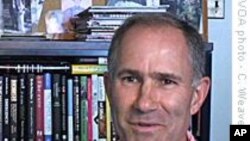“It was like planning for a long vacation.” That’s how Daryl Julich, of Cedar Rapids, Iowa, says he budgeted for the cost of donating one of his kidneys to a stranger: several weeks' lost income and a no-expense-paid trip to New York City. Of course, few people would plan a “vacation” that required a two-day fast, painkillers, and days of disability -- all to help someone else have a better life. But Julich, who has a small glass-repair business, and his wife Sher Jasperse, a freelance writer and editor, are not like most people. Both in their 50s and serious runners, they met at a race in 1990, and bonded, in part, over their shared Christian faith and belief in giving to others.
Julich said that he first thought about becoming a kidney donor several years ago, after seeing a television program on the subject. The program made the point that a single altruistic donor can begin a kind of “pay it forward” chain.That’s because many people who need a kidney transplant have a family member or friend willing to donate to them, but whose blood factors are incompatible. But almost every potential donor can be matched with someone, if strangers are paired together -- creating a chain that continues until a kidney is transplanted into a patient who has no family member or friend able to donate. Altruistic donors, because they do not need to receive a kidney, can begin the chain.
<!-- IMAGE -->Over the next few years, Julich occasionally remembered his interest in donating a kidney. Then, in June 2008, a flood devastated Cedar Rapids. Several months later, volunteers from a charitable organization called “Eight Days of Hope” arrived to help.Kenneth Hubbard, a North Carolinian, was among them, and he and Julich became friendly.
“And one day we were talking, and Kenny said, ‘I’m a blood donor, and I said, ‘So am I,’” Julich recalls. “And he said, pointblank, ‘Have you ever thought about donating a kidney?’ I said, ‘Yes, I have, why?’ He said, ‘Well, I just gave one in April.’ And so we sat for a couple of hours talking about the procedure, and then pieces started falling into place from there.”
Hubbard’s altruistic donation had made possible one of the largest set of near-simultaneous transplants: kidneys from six donors transplanted into six recipients all on April 8, 2008, at the Johns Hopkins Hospital in Baltimore, Maryland.
Soon after the conversation, Julich signed up on the National Kidney Registry and began months of medical tests to determine if he was healthy enough to donate, and to match him with possible recipients. Living kidney donors have longer life expectancies than non-donors, he learned; only about 60 living donors have ever later needed a transplant themselves. And living-donor kidneys also survive in their recipients about twice as long as those transplanted from cadavers – largely because the matching can be more precise.
<!-- IMAGE -->Last summer, Julich got the call from a transplant coordinator at New York-Presbyterian/Weill Cornell Medical Center: His blood factors matched with those of a New York-area woman who had been on dialysis for over a year. Could he be in New York by late August? Friends and fellow church members helped underwrite travel expenses, and an organization called Miracle House provided low-cost housing for Julich and Jasperse’s two-week stay in Manhattan.
<!-- IMAGE -->As is standard in altruistic donations, donor and recipient would remain anonymous to each other until after the transplant -– or forever, if they wished. But a week post-surgery, Julich and his recipient (who asked not to be identified) and their spouses did choose to meet, Julich said, and exchanged hugs and addresses. In October, the recipient’s 48-year-old son became the next to donate, also at New York-Presbyterian. His kidney was flown at once to California and transplanted into a 24-year-old man within hours. Two other recipients received their transplants the same day, and the chain that Julich began is expected to continue.






